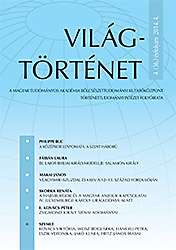A középkor lenyomata: a szent háború
The Imprint of the Middle Age: The Holy War
Author(s): Philippe BucSubject(s): History of Church(es), History of Religion
Published by: Magyar Tudományos Akadémia Bölcsészettudományi Kutatóközpont Történettudományi Intézet
Keywords: Christianity; armed violence; Middle Ages; Early Modern Europe
Summary/Abstract: Far from examining whether religion (in general) causes violence or violence fi nds religion, the following pages examine how Christianity has been a condition of possibility for armed violence over the longue durée. In other words, how the theology specifi c to Western Christendom has imprinted specifi c traits on war, not only despite the Protestant-Catholic divide, but also over the “secularizing” divide that putatively separates the premodern West (Late Antiquity, the Middle Ages, Early Modern Europe with its North American off shoot) from Modernity. That God is simultaneously the Old Dispensation god of War (and retribution) and the New Testament god of Peace (and mercy) has engendered a paradoxical dialectic between these terms. That Scripture can be read according to several spiritual senses alongside its letter can bring together in conjunction violences against external enemies, against vices and vicious humans, and against darker powers. This in turn explains the common conjunction between war, reform, and purge. Finally, the notion of a History that culminates in Apocalypse and Last Judgment also explains the rhythms of armed, purgative violence: The War at the End of Times can be typifi ed by a war in the normally peace-seeking time of the New Testament, which in turn means that this confl ict can take the traits of the End Times, no holds barred violence.
Journal: Világtörténet
- Issue Year: 2014
- Issue No: 4
- Page Range: 557-578
- Page Count: 22
- Language: Hungarian

